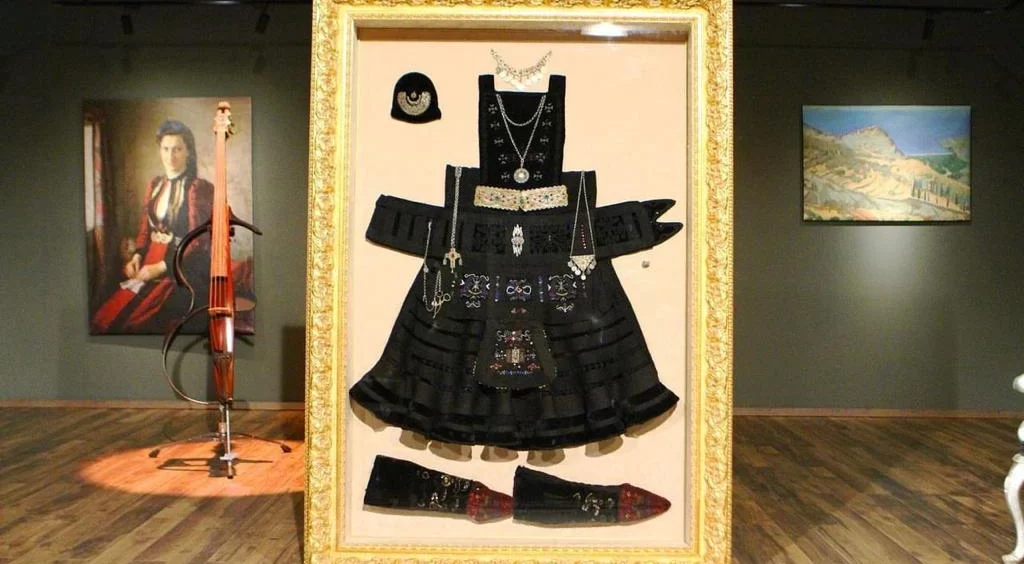The xhubleta of the Highlands is a clear legacy of our Illyrian heritage, passed down by the highland women until the 1950s-1960s, making it one of the identifying elements of traditional Albanian dress, characterized by motifs with the emblem of the eagle. While the history of other ancient peoples was preserved in “hieroglyphs” carved in stone and other circumstantial tools, for the Illyro-Albanians, this history was preserved and “embroidered” in the messages, colors, symbols, and figures of the xhubleta.
Who hasn’t been amazed by the waves of this noble garment worn by the women of Northern Albania, this millennia-old work of art that anyone would be proud to own?
The xhubleta consists of a bell-shaped skirt that flares out at the bottom, especially at the back. This garment is made of numerous narrow strips of woven fabric, sewn horizontally and interwoven with braided bands, and is worn suspended from the shoulders with two wide straps.
Some of the main symbols of the xhubleta include: the symbol of Zeus’s two eagles, the solar swastika, oak leaves, other pagan and Christian motifs, intricate filigree designs with various floral patterns, xhubleta buttons, and beautiful ornaments crafted from copper, brass, silver, and gold plating. These not only give the garment a unique appearance but also indicate the social status of the woman wearing it.
In the 18th century, the xhubleta consisted of many colors, but those that have survived to the present day are: black for women and black and white for girls. Other parts of this costume include the kraholinë, xhoka, kërdhokla, paraniku, kallmat, and shputat, among others.
The xhubleta remains the pride of our ancient culture, possibly one of the only garments without any Oriental or Slavic influence. It has two variants (Malësia e Madhe – Dukagjin), representing the grandeur of our Alps and symbolizing ancient cults stylized with intelligence and delicacy.










 Rruga e Elbasanit, Pallati nr. 111,
Rruga e Elbasanit, Pallati nr. 111,